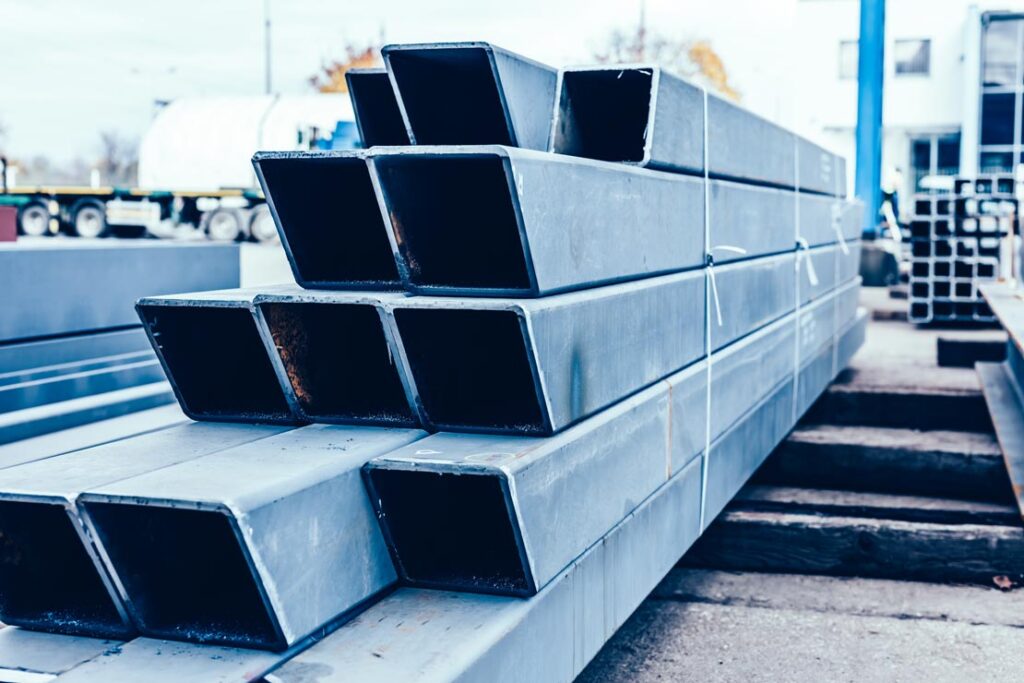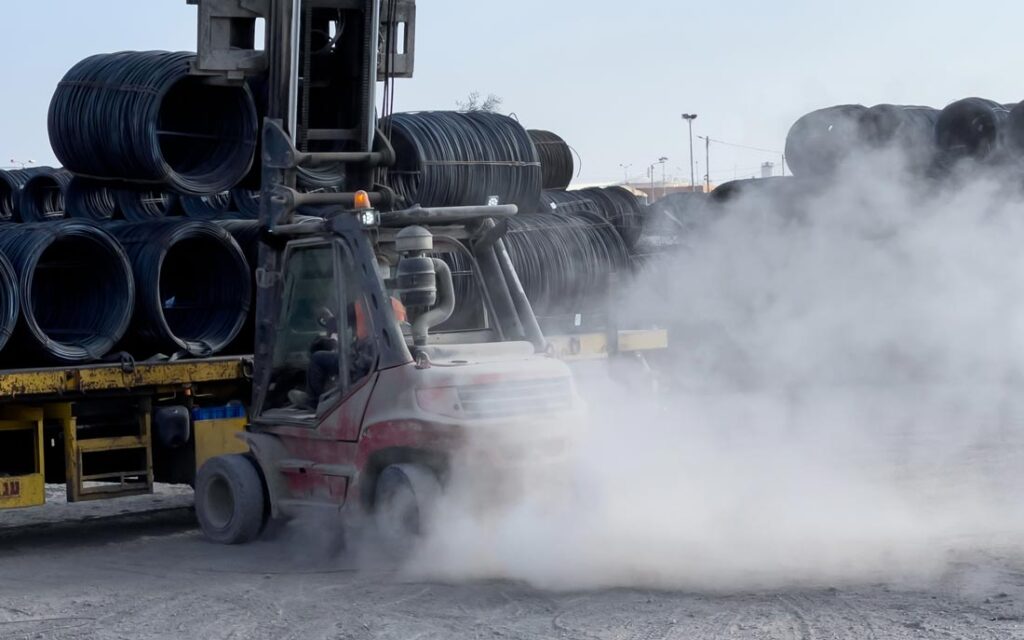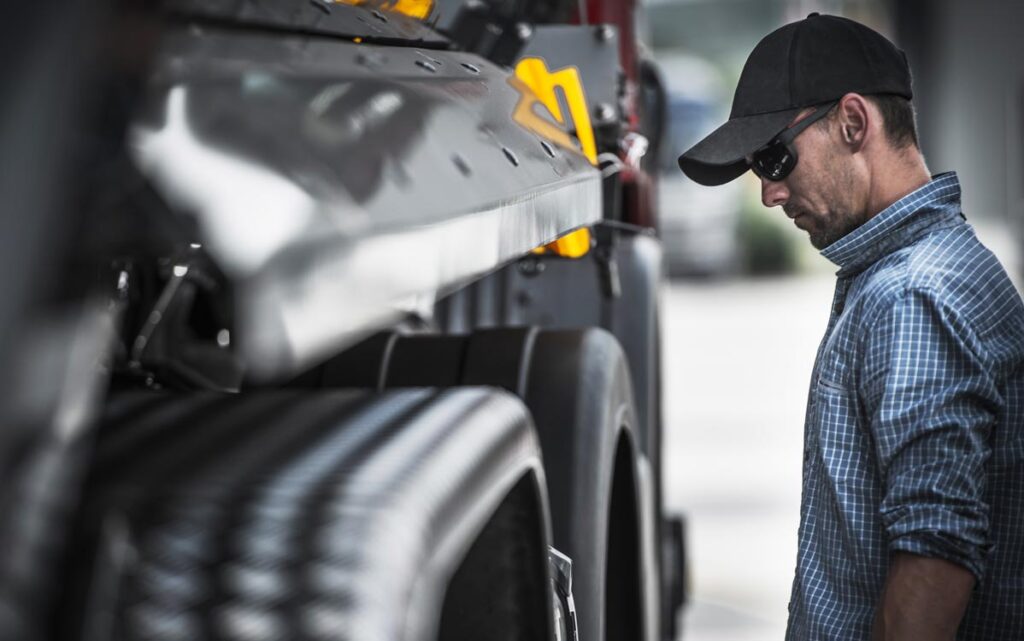
What is ugly freight?
“Ugly freight” is a term used in the freight and logistics industry to describe cargo that is difficult to transport due to its size, shape, weight, or handling requirements. It may refer to oversized items, items with odd or awkward shapes, items that require special handling, or items that can’t be easily stacked or palletised. This could include machinery, vehicles, large pieces of furniture, or any other item that can’t easily fit into a standard shipping container or truck.
These items are often more expensive to transport due to the additional logistical challenges and special equipment they require. Ugly freight may also be more prone to damage during transit, further increasing the risk and cost associated with their transport.
This freight category includes oversized or heavy goods like machinery and building materials, fragile items such as glass and artwork, hazardous or dangerous goods like paint and chemicals, perishables and cold-chain commodities, time-sensitive shipments, and goods shipped to remote locations.
Understanding what constitutes ‘ugly freight’ is merely the beginning. It’s crucial for every shipper to learn how to prepare these types of goods correctly before shipping. Not only does proper preparation improve the safety of these goods during transit, but it also mitigates the risk of personal injury to the driver, the public, other road users and personnel involved in handling the goods. One of the biggest benefits to preparing ‘ugly’ freight correctly for shipping is it will minimise the risk of incurring extra charges, such as non-stackable fees, over-length, and additional manual-handling fees.
Get the One World Courier guide to shipping heavy and “ugly freight” in Australia.
Below are some examples of ugly freight.
- Heavy Machinery: Construction equipment, farm machinery, or other large industrial equipment may be considered “ugly freight” due to their weight and size. They often require specialized trailers for transport.
- Boats: Larger boats can’t be packaged in a standard way and require unique handling and shipping methods.
- Large Sculptures or Artwork: These items are often irregularly shaped and fragile, making them difficult to transport.
- Specialty Vehicles: Custom or specialty vehicles like race cars, show cars, or vintage cars might be considered “ugly freight” as they often require special handling to prevent damage.
- Oversized loads: These could be anything from prefabricated parts of buildings to large timber logs or even wind turbine blades. Their size alone makes them hard to handle and can often require special permits to transport on public roads.
- Hazardous Materials: Though these might fit in standard containers, their handling requirements could also classify them as “ugly freight.”
In this blog post, we’ll dive into the depths of ‘ugly freight’ shipping, exploring expert strategies on how to prepare your cargo for a safe and cost-effective journey.
Avoiding Damage to Property and Others:
Protecting your freight from causing or receiving damage is a cornerstone of successful ‘ugly freight’ shipping. Think non-crated farm machinery parts such as tractor spare of large hoppers, or maybe large construction equipment. For example.
Uncrated Farm Machinery Parts Ugly Freight Examples:
- Tractor Engine Components: These could include parts like radiators, fuel injectors, or pistons that are usually heavy and have sharp or pointed edges that could damage other cargo if not properly secured.
- Combine Harvester Threshing Elements: These are complex, bulky, and often come with sharp edges.
- Plow Blades: These are usually made of heavy-duty steel and have sharp, pointed ends that could potentially cause damage to other items during transportation.
- Baler Components: Parts such as pickup reels or baling chambers can be bulky and awkwardly shaped, making them difficult to handle.
- Disc Harrow Blades: These blades are usually circular and sharp, posing a potential hazard if not secured properly.
Large, Ugly Freight Construction Equipment:
- Excavator Buckets: These large, heavy components require special handling due to their shape and weight.
- Crane Jibs: These are long, heavy, and awkwardly shaped, posing a challenge for packaging and transportation.
- Bulldozer Blades: These are large, heavy and have a unique shape that can make them difficult to transport if not properly secured.
- Backhoe Arms: These large, lengthy components can pose challenges due to their length and weight.
- Concrete Mixer Drums: These large cylindrical components can be difficult to handle due to their size, weight, and the fact they need to be kept upright.
- Get the One World Courier guide to shipping heavy and “ugly freight” in Australia.
Heavy Industrial Ugly Freight:
- Industrial Boilers: These large, heavy pieces of equipment are often oversized and require special handling.
- Wind Turbine Components: The blades and tower sections of wind turbines are extremely long and awkwardly shaped, making transportation a challenge.
- Pressure Vessels: These can range in size but are often large, heavy, and require careful handling to prevent damage.
- Large-scale Generators: These are very heavy and oversized, requiring special equipment for transportation.
- Heavy Machinery: This could include anything from large industrial presses to cranes or earth movers.

Manufacturing Components as Ugly Freight:
- Machinery Parts: Large, uncrated machinery parts such as gears, shafts, or engines could be considered “ugly freight” especially when multiple items are being shipped. When transporting any automotive part such as an engine, gearbox etc, additional consideration must also be given to the flammable liquid contained inside. Specific guidelines are in place to prevent engine parts from being shipped fully loaded with oil, diesel and petrol. Additionally, when shipping engines and gearboxes, they can be classed as Dangerous Goods (DG) and may require additional inspection and the appropriate paperwork such as a Material Safety Data Sheet (MSDS). Refer to our Dangerous Goods Checklist here.
- Automotive Assemblies: Large assemblies like car frames or automotive body parts can be bulky and awkward to handle.
- Pallets of Raw Materials: Depending on the material, these can be heavy, awkward, and potentially hazardous requiring a Dangerous Goods (DG) Certification before shipping.
- Oversized Moulds: Used in various manufacturing processes, these can be bulky, heavy, and have an irregular shape and tend to roll. These items require additional tie-down straps and chains to prevent movement or slippage during long transit distances.
- Industrial Robots: These can be very large and heavy with multiple protruding parts as well as delicate electronics which require extra care and attention.
Mining Equipment – Big, Expensive, Heavy Ugly Freight:
- Dump Truck Bodies: The large bodies used for heavy-duty mining trucks are oversized and extremely heavy.
- Dragline Buckets: These massive buckets can weigh several tons and have an awkward shape, therefore require specific transport and additional precautions before and during shipping.
- Crusher Parts: Large parts like a gyratory crusher mantles or cones are oversized and heavy and must be handled with care and be securely tied down as well as supported on the correct pallets or skids.
- Conveyor Components: Long sections of conveyor belts or heavy drive units can be considered “ugly freight” and have components which can be 6-metres in length, presenting a challenge for standard trucking and carrier companies
- Drilling Equipment: This can include long and oversized drill rods or large drill heads which, because of their shape must be crated and secured to minimise damage but also as a security precaution because of the value of these pieces of equipment which contain diamond-tipped drill heads.
Cylinders, Storage Tanks and/or Pressure Vessels.
Large cylinders, such as the type used for industrial applications include storage tanks, or pressure vessels, can indeed be considered “ugly freight” due to their size, weight, and shape. Shipping these items presents unique challenges for freight carriers to ensure safe transportation from the time the goods are picked up, to delivery. Another consideration is the allowance to additional personnel to attend the loading and unloading of these large cylindrical objects. Large crane trucks are required when shipping these objects, equipped with HIAB (Hydrauliska Industri AB, a company founded in Hudiksvall, Sweden 1944) functionality (hydraulic lifting), which can affect the overall price of the project.
Handling and shipping large cylinders typically involve the following considerations:
- Size and Weight: Large cylinders can be extremely heavy, which makes them difficult to load and unload onto trucks, flatbeds, semi-trailers and B-Doubles. As mentioned earlier, specialised equipment such as cranes or forklifts are often required at pickup and delivery locations. The weight of the cylinders may also mean they need to be transported on specific types of multi-axle trucks that can handle the load.
- Shape: The cylindrical shape of these items makes them prone to rolling, which poses a significant risk during transport. It’s crucial to secure them properly to prevent movement during transit. This can be done using materials like straps, chocks, or cradles designed to hold cylinders.
- Material and Contents: If the cylinders are used for storing gases or liquids (like propane tanks or chemical storage vessels), they could be considered hazardous materials or Dangerous Goods. This requires compliance with specific regulations and will inevitably require special freight permits or handling procedures.
- Orientation: Some cylinders may need to be transported in a specific orientation (vertical or horizontal) depending on their design and the nature of their contents.
- Temperature Sensitivity: Certain cylinders, especially those containing gases, might have temperature-sensitive properties. If so, they may require temperature-controlled transportation.
It’s also worth noting that proper handling and preparation of large cylinders for shipping is not just about the physical aspects of the cargo. Shippers must also comply with local and international shipping regulations, which may require special documentation, packaging labels, and potentially inspections or certifications and an accompanying Material Safety Data Sheet (MSDS).
Refer to our Dangerous Goods Checklist here.

Ugly freight considerations
At One World Courier, we work closely with our freight carriers to make sure your ‘ugly freight’ gets to its destination safely, on time and at a good price. To do this, we need your help to prepare every item to be shipped meets the requirements for the safe transportation of the goods.
Get the One World Courier guide to shipping heavy and “ugly freight” in Australia.
Here’s why it’s important:
- Taking Care of Your Goods: Proper preparation keeps your items safe and secure. When packed correctly, items classed as ‘ugly’ are less likely to get damaged during transit. It’s all about making sure your items reach the destination in the same condition they left.
- Packaging and Protection:
One of the biggest challenges shippers and carrier alike face is how ‘ugly’ freight is packaged. There are many instances where the shape and configuration of oversized, heavy and ‘ugly’ freight may alter during the course of its journey from being manufactured, to being delivered to the customer. Bearing in mind when goods are manufactured, they may be packaged and shipped by sea freight. These items travel long distances and can be subject to moisture and movement which can damage existing external packaging.
When several items are shipped together as one object, let’s use the example a piece of industrial equipment or mechanical machinery for a manufacturing plant which has several components, (A), (B), (C) and (D). In our experience, these separate items my be loose and not combined with proper packaging and straps. Unprotected, loose metal components present additional challenges for freight carriers, and even more so for the driver who must decide whether they can accept the goods based on the risk of load shift and damage occurring to the goods, the truck, themselves and the public. In most cases, the goods will be transported, however it is the customer/shipper who may have to bear the additional costs of shipping due to:
– A larger and more suitably equipped truck being required
– Additional time taken to secure the goods before loading onto the truck
– A manual handling fee is applicable
– More space taken up on the truck (non-stackable surcharge applicable)
– The goods take up more space on the truck (oversize surcharge applicable)
– Dangerous Goods (DG) certification required (additional charge) - Making Loading Easier: When your freight is well-prepared, it’s quicker and easier for drivers and operators to load it onto trucks. This helps carriers stick to strict schedules and in doing so reduces the risk of additional charges being incurred.
- Keeping Everyone Safe: Safety is a big deal for everyone. When items are packed correctly and secured, it reduces the chance of accidents. This keeps your goods, your team, and everyone else safe.
Ugly freight shipping tips
In summary, here are some important guidelines you should follow when arranging the shipping of ‘ugly’ freight. These tips will help our carriers transport your goods safely. Here’s how you can assist:
- Proper Packaging: Always ensure your goods are packaged securely. This might involve using durable crates, pallets, or other appropriate containers. This not only protects your items but also prevents them from damaging other goods during transit.
- Secure the Freight: Keep in mind that your goods may move during transit. Use straps, wraps, or other means to secure your items properly within their packaging. This is especially important for heavy or oddly shaped items, which might shift or roll.
- Label Clearly: Make sure to label your goods clearly. If your freight is fragile, heavy, or needs to be kept upright, mark it! The better our carriers can understand your freight, the better they can deliver it.
- Hazardous Materials: If your freight contains hazardous materials, it’s critical to declare this upfront. The One World Courier Freight Management Platform allows for the identification of dangerous goods and liquids. Shippers must follow the guidelines for packaging and labelling Hazardous and Dangerous Goods. We need to know exactly what our carriers are handling to make the necessary preparations to transport the goods can be made well in advance.
- Documentation: Ensuring all necessary documents for shipping ‘ugly’ freight are prepared. This can lead to errors when manually preparing con notes and organising the printing of shipping and address labels. Fortunately, bookings made through the One World Courier platform automatically generate the appropriate digital documents and shipping and address labels, in a format every carrier can read. This includes details about the goods, their pickup and delivery destination, and any special handling requirements. Good documentation helps avoid pickup and delivery delays and misunderstandings.
- Dimensions and Weight: Provide accurate measurements and weight of the freight. This helps us to prepare the right equipment and space on our carrier vehicles. Good planning is the guaranteed way to avoid delays, delivery time overruns and additional and unexpected charges.
In short, preparing your ‘ugly freight’ right makes everything run smoother. It helps us to do our job better, and it ensures your goods reach their destination safely and on time. It’s a big part of how we deliver excellent service to you.
Remember, ‘ugly freight’ doesn’t have to be a thorn in your side when it comes to shipping. With careful preparation, a clear understanding of the unique requirements each item being shipped entails.
One World Courier has the expertise and freight partners who are equipped to transport all manner of objects which are classed as ‘ugly’ freight. Our Freight Operations Teams connect with our heavy transport partners who themselves carer for large, heavy, odd-shaped and oversized freight. Our goal is to educate and assist our own customers on ‘best practice’ procedures to make sure every piece of freight is delivered safely, on time, and without incurring unnecessary additional costs.
Let One World Courier help arrange pickup and delivery of your complex shipping needs when it comes to ugly freight. Create a FREE One World Courier account here.
Benefits of a One World Courier freight account.
- No set up fees
- No minimum use (use when you like)
- No hidden charges
- Access hundreds of freight delivery options
- Full access to all functionality on the platform
- International and Australian freight partners
- 100% access to every feature on the platform
- Quick quotes and instant bookings
- Low freight rates and greater delivery choices
- Use only when you need to compare freight quotes
Sign up for a trial account here.
